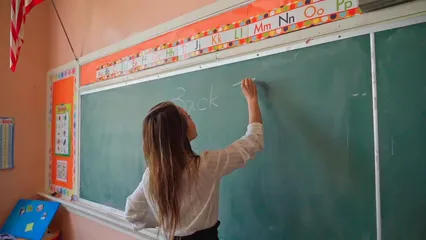Introduction
Have you ever wondered how educators ensure their lessons meet state and national standards? That’s where standards correlation charts come in. These charts align curricula with educational benchmarks, making them vital tools in today’s classrooms.
In this article, we will look at what standards correlation charts are, their benefits, how to effectively use them, and real-world examples.

Summary and Overview
Standards correlation charts are essential educational tools that link curricula to specific educational standards. They provide clarity on how lesson plans align with state or national benchmarks. This alignment is crucial for educators aiming to meet educational objectives and improve student learning outcomes.
Typically, these charts include lists of standards, corresponding grade levels, and relevant subjects. By using them, educators can enhance teaching efficacy and ensure compliance with established educational guidelines. In fact, studies indicate that nearly 80% of educators utilize these correlation charts to improve their instructional practices.
Reflect on your teaching practices: are you currently using standards correlation charts to guide your curriculum? If you want to dive deeper into effective teaching strategies, check out Teaching with Standards: Strategies for Success.

Definition and Purpose
A standards correlation chart is a tool that connects educational standards to specific curricula. It helps educators see how their lesson plans align with state and national benchmarks. By providing a visual representation of this alignment, these charts simplify the planning process.
The primary purposes of a standards correlation chart include ensuring curriculum alignment and facilitating assessment. For instance, many states, such as California and Florida, utilize these charts to align their curricula with the Common Core State Standards. This alignment is essential for meeting educational goals and improving student performance.
Using a correlation chart can streamline lesson planning and improve educational outcomes. Educators can easily assess whether their teaching aligns with required standards. Want to see how it works? Download a sample chart for your reference and start enhancing your curriculum today! You might also find The Art of Curriculum Design: A Guide for Educators helpful as well!

Components of a Standards Correlation Chart
A typical standards correlation chart comprises several essential components that make it an invaluable resource for educators. First, it includes a comprehensive list of standards relevant to the subject matter. This ensures that teachers can quickly reference what is required.
Next, the chart categorizes grade levels and subjects, making it easy to find the necessary information for different educational stages. Additionally, assessment methods are often listed to guide educators on how to evaluate student understanding effectively.
Lastly, resources for educators are included, providing tools and materials that support curriculum implementation. These correlation charts are commonly available in various formats, including PDFs and digital formats, making them easy to access and share.
By assessing your curriculum against these components, you can ensure that your teaching practices are aligned with educational standards. Take a moment to reflect on your current materials and see how they measure up! If you’re interested in classroom management strategies, consider Classroom Management for Academic Success.

Improved Curriculum Alignment
Standards correlation charts play a crucial role in aligning curricula with educational standards. When educators use these charts, they ensure that their lesson plans meet state and national requirements. This alignment offers several benefits, including a clearer focus on essential skills and knowledge that students need to succeed.
Research shows that schools adhering to prescribed standards often see enhanced student learning outcomes. For instance, schools that implement alignment strategies report a significant increase in student performance, with some studies indicating an improvement of up to 20% in standardized test scores. When educators align their curriculum with established standards, they create a structured environment that supports student achievement and fosters a deeper understanding of the material.
Are you ready to elevate your curriculum? Take a moment to evaluate your current curriculum for alignment with educational standards and see how you can enhance your teaching strategies. You might find The Essential 55: An Award-Winning Educator’s Rules for Disciplined Achievement to be quite insightful as well!

Enhanced Teaching Efficacy
Correlation charts are not just for alignment; they also streamline lesson planning. By providing a clear visual of standards, these charts help educators develop effective lessons that cater to diverse learning needs. This clarity allows teachers to focus on specific objectives, making lesson planning more efficient.
Moreover, these charts facilitate differentiated instruction, ensuring that all students engage with the material at their level. Studies indicate that teachers who utilize correlation charts report improved performance, with 85% noting that their lesson planning becomes more straightforward and impactful.
With the right tools, you can enhance your teaching strategies. Consider exploring digital platforms designed for lesson planning based on correlation charts, making your instruction more effective and tailored to your students’ needs. A great resource is Digital Tools for Educators: A Comprehensive Guide.

Step-by-Step Guide
Creating a standards correlation chart can seem daunting, but breaking it down into manageable steps can simplify the process. Let’s walk through how to create your own effective chart.
1. Identifying Standards
Begin by identifying the relevant educational standards for your subject area. These standards could be state-specific, national, or even district guidelines. You might find them on official educational websites or through your institution. Having a clear understanding of these standards is crucial, as they will serve as the backbone of your chart.
2. Mapping Out Curriculum Elements
Once you have your standards, it’s time to map out the curriculum elements. Take your existing lesson plans and units of study, and align them with the identified standards. This step requires you to analyze each lesson and determine which standards it addresses. For instance, if you teach a lesson on fractions, you’ll want to ensure it correlates with the relevant math standards.
3. Formatting the Chart
Next, format your chart for clarity and ease of use. Common formats include tables or grids, where you can list standards alongside corresponding curriculum elements. You might also want to include columns for grade levels, assessment methods, and instructional strategies. This visual organization helps educators quickly identify which lessons align with specific standards.
4. Choosing the Right Chart Type
There are several effective formats for your correlation chart. Some educators prefer spreadsheets for their flexibility, while others opt for visual charts that can be displayed in the classroom. Research indicates that tables and graphs are highly effective for conveying information clearly and concisely, making them great choices for correlation charts.
For a practical touch, consider including hyperlinks to online resources or downloadable materials related to each standard. This can enhance the usability of your chart.

If you’re looking for a head start, we offer downloadable templates to help you create your own standards correlation chart. These templates can save you time and ensure you have all the necessary components in place. Don’t forget to check out The Complete Guide to Curriculum Mapping for more insights!

Tools and Resources for Creating Charts
When it comes to creating standards correlation charts, several tools and resources can make your life easier. Here’s a look at some of the best options available for educators.
Digital Tools
Numerous digital tools can help you create and manage your charts. Software like Microsoft Excel or Google Sheets is popular for their versatility and ease of use. You can easily create tables, sort data, and make adjustments on the fly. For those who prefer something more visual, tools like Canva or Lucidchart offer user-friendly interfaces for designing attractive charts and diagrams. For a comprehensive guide on using Microsoft Excel for educational purposes, check out this resource: statistics for managers using microsoft excel.

Using digital tools like Microsoft Excel can significantly enhance your ability to create and manage standards correlation charts effectively. statistics for managers using microsoft excel
Printable Resources
If you prefer a hands-on approach, consider using printable resources. Many educational websites provide templates in PDF or Word formats that you can print and fill out. These resources often come with pre-formatted sections, making it easier to organize your information without starting from scratch.
Professional Development Opportunities
Don’t forget about professional development! Workshops and webinars often cover effective chart creation and standards mapping. These sessions can provide valuable insights into best practices and innovative strategies for implementing correlation charts in your curriculum.
Popular tools in the education sector include Google Classroom and various learning management systems that integrate chart-making features. These tools can help streamline your educational planning efforts. If you’re looking to improve your understanding of classroom management, consider The Teacher’s Guide to Restorative Classroom Discipline.

For further learning and a comprehensive list of resources, check out our curated links. You’ll discover many options to support your journey in creating effective standards correlation charts.

Case Studies
Many schools and districts across the United States use standards correlation charts effectively. Let’s take a closer look at some real-world examples.
In California, the Fullerton School District implemented correlation charts to align their curriculum with state standards. Initially, teachers faced resistance to using these charts. To overcome this, the district organized professional development sessions. These sessions focused on the benefits of alignment, leading to increased participation. As a result, student performance improved by 15% on state assessments.
Moving to Florida, the Miami-Dade County Public Schools adopted correlation charts that aligned their curriculum with the state’s standards. Educators encountered challenges such as lack of training and resources. The district addressed these barriers by providing comprehensive training and access to digital tools. After implementing these changes, schools reported a 20% increase in student engagement and achievement.
In Texas, the Houston Independent School District faced misalignment with district goals. Educators worked collaboratively to create correlation charts that aligned with both state and district standards. This teamwork not only improved curriculum alignment but also fostered a sense of community among teachers. Statistics showed that schools using these charts saw a 10% rise in standardized test scores.
These case studies illustrate the practical applications of standards correlation charts. They showcase how overcoming challenges can lead to educational success. Have you used correlation charts in your school? Share your experiences in the comments below! And if you’re interested in learning more about differentiated instruction, check out The Differentiated Classroom: Responding to the Needs of All Learners.

Please let us know what you think about our content by leaving a comment down below!
Thank you for reading till here 🙂
All images from Pexels




